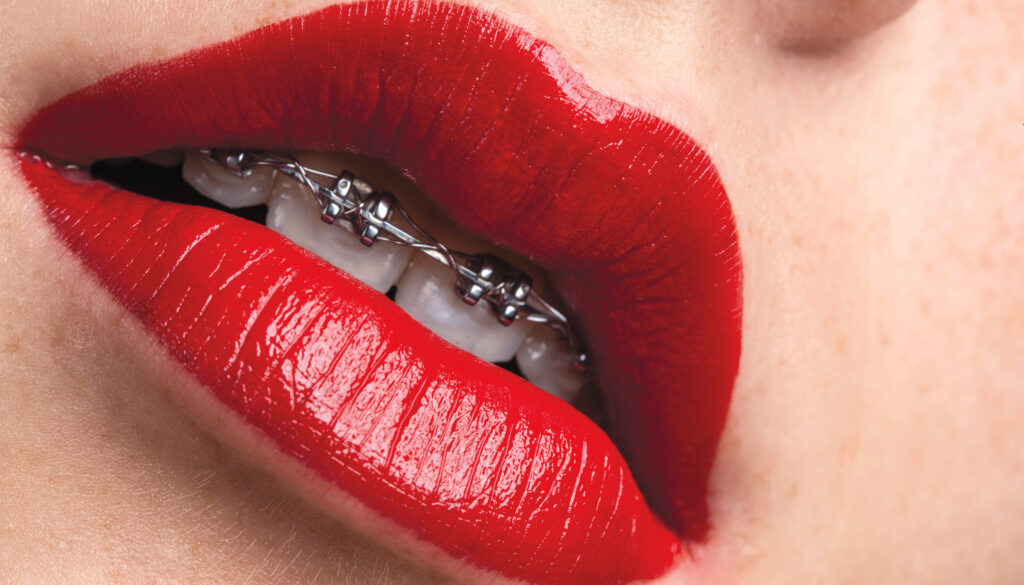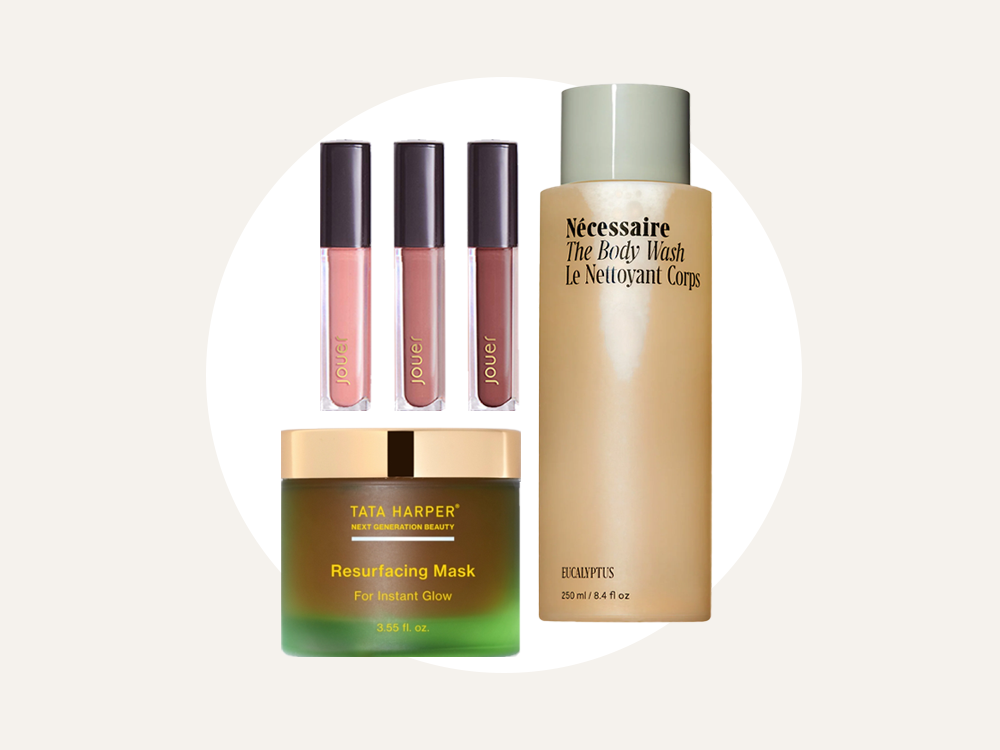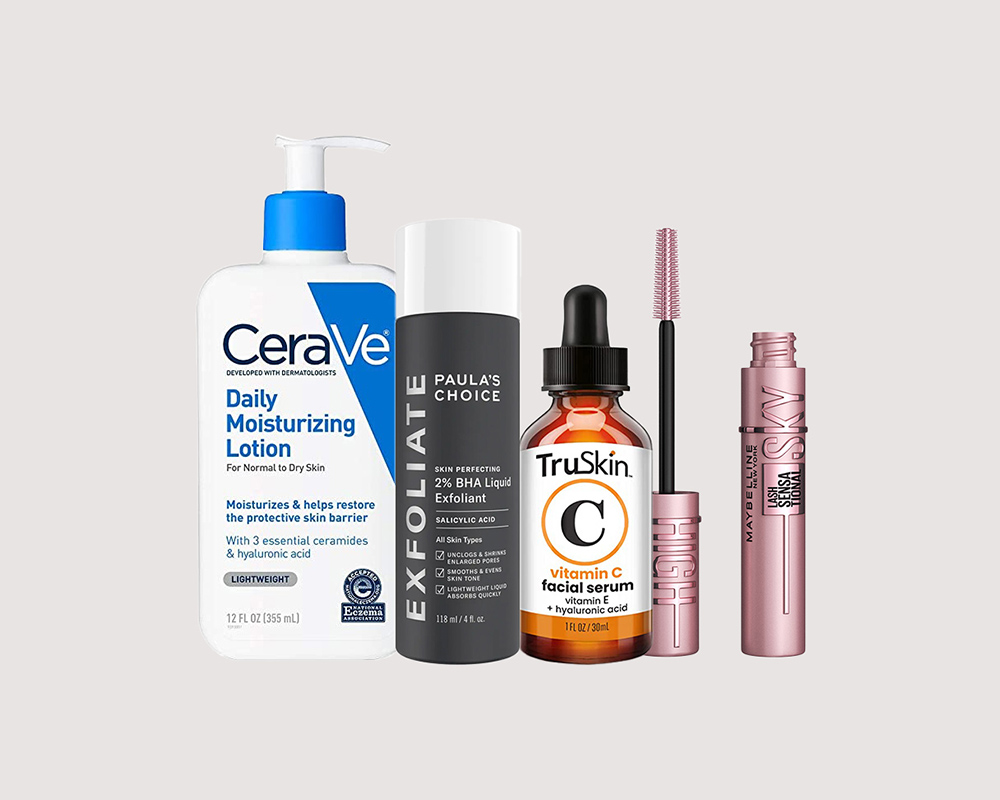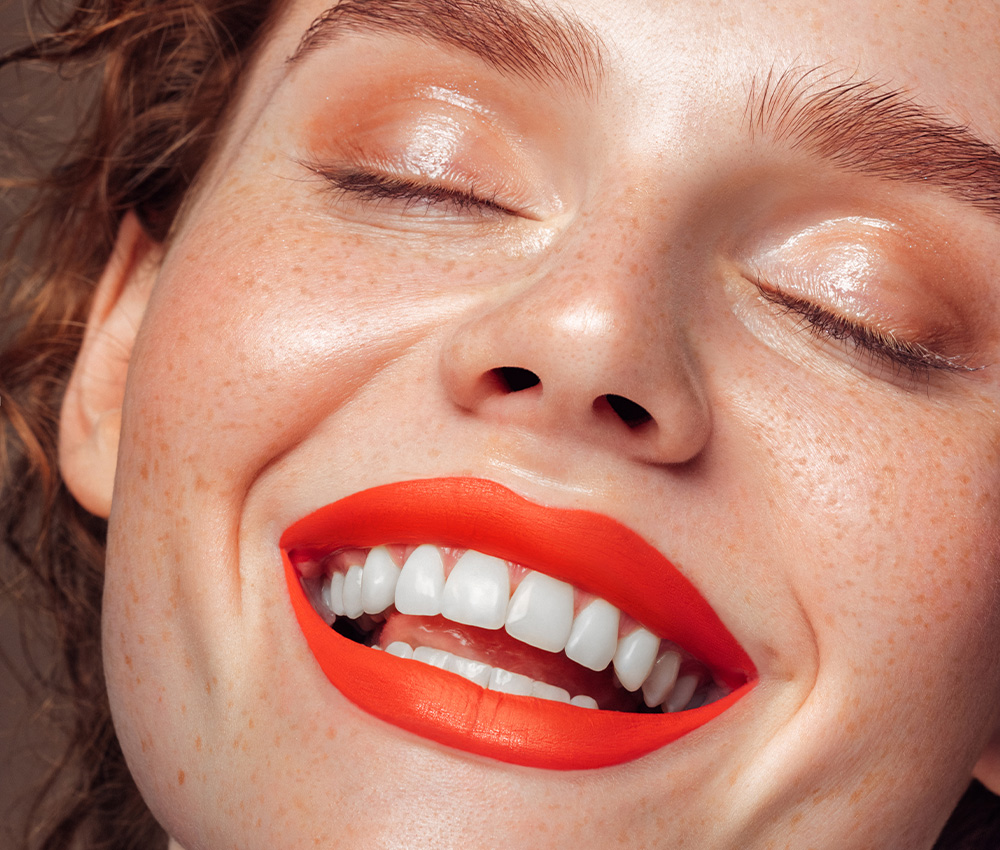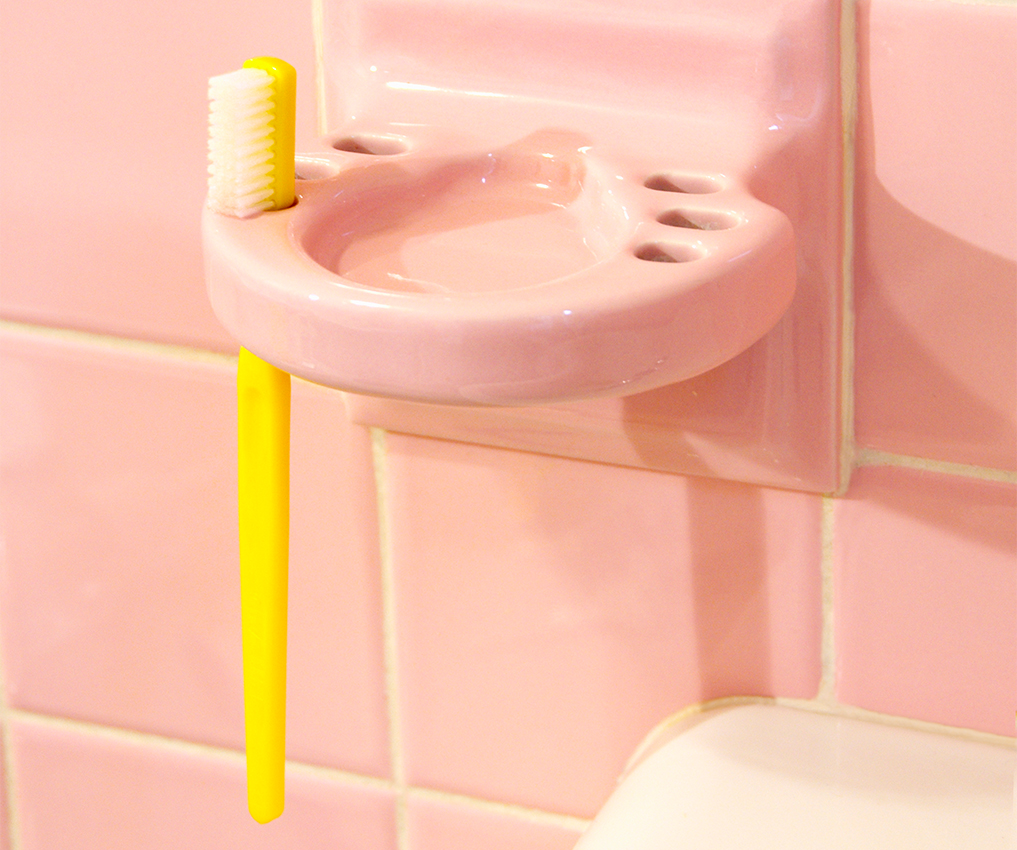Whether you had braces as a teen and didn’t wear your retainer, or you skipped out on the orthodontist altogether, it may be time for a straighter smile. Determining the right adult straightener for each person’s goals and lifestyle can be challenging, but the experts are here to help.
01: Invisible Aligners
Invisible aligners are often a top OBSESSED choice because they’re pretty unnoticeable. They use “a series of clear aligner trays to move the teeth into their ideal positioning,” explains Chicago cosmetic dentist Nathan Hoffman, DDS. “Following a scan of your teeth, a diagnosis and a developed treatment plan, you’re given a series of customfit clear retainers,” says New York cosmetic dentist Jason Kasarsky, DDS, adding that the technology has advanced to where it can treat most alignment issues.
“The pros definitely outweigh the cons,” adds Dr. Hoffman. New York cosmetic dentist Husam Almunajed, DMD says invisible aligners are comfortable and virtually invisible, they involve no wires or brackets, you can remove them for photos and events, and your actual teeth remain untouched. “We have had ladies get married while in treatment with clear aligners, and they were able to enjoy their special day with ‘nothing’ on their teeth.”
The length of treatment depends on the initial positioning of the teeth and the patient’s desired smile, but expect between three months and a year. New York cosmetic dentist Timothy Chase, DMD says wearing them for more than 20 hours a day results in the most efficient treatment. Compliance can affect success.
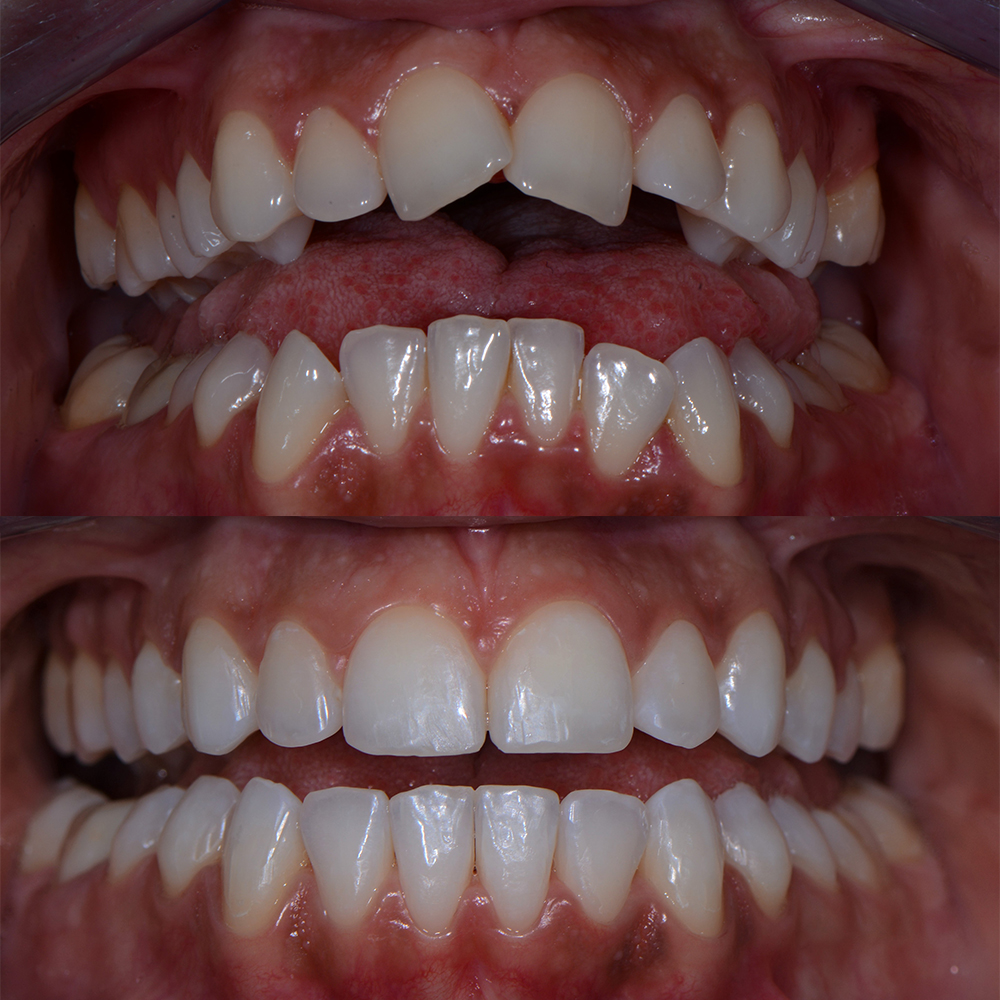
02: Lingual Braces
“Lingual braces are very similar to traditional wire and bracket braces, but they are placed on the inside—the tongue side—of the teeth instead of the frontal part,” Dr. Chase explains. This makes them a great option if you need braces but don’t want them to be too obvious. As the treatment evolves and a dentist makes adjustments, the metal wire and rubber bands are manipulated to encourage movement to the desired position, says Dr. Hoffman.
While it’s great that they’re hidden, Dr. Hoffman notes they can be tough to keep clean and potentially uncomfortable against the tongue. “This treatment generally lasts for one to two years or more,” he says. Dr. Almunajed notes that lingual braces tend to take longer than traditional braces because the movements are more limited. Be forewarned: A lisp is likely to come with this option. Some fade; others stick around for the whole treatment. “If the patient is comfortable with adjusting their speech and diet, and is OK to deal with the discomfort that the placement of lingual braces creates, then they should be considered a candidate,” says Dr. Hoffman. “This can be a good option for patients with minor bite issues. However, lingual braces are not for everyone, and patients with deep overbites will have issues as they are constantly popping off brackets,” adds Dr. Almunajed.
The pros definitely outweigh the cons.
03: Ceramic Braces
“Ceramic braces are also referred to as ‘clear’ braces. And as the name suggests, they are an alternative option for those looking for a more discreet way to move their teeth,” says Dr. Hoffman. “These, however, are not totally invisible—they are just less noticeable than traditional metal braces.” This treatment involves clear-colored ceramic brackets being attached to the fronts of the teeth with similar-colored wires threaded through. Then rubber bands are used during treatment to help move teeth into their ideal position over the course of one to three years. Dr. Hoffman notes that ceramic braces are less painful than traditional braces on the cheeks, gums and tongue, but not more comfortable in general. “The brackets used for ceramic braces tend to be larger than traditional metal brackets,” he adds.
“Patients with moderate orthodontic needs could benefit from ceramic braces, but those with more severe concerns should likely consider another option,” Dr. Hoffman says.
04: Metal Braces
Metal braces are the ones most of us had in middle school, featuring conventional stainless steel wires, brackets and rubber bands. The perfect candidates are “patients who want predictable results and have low aesthetic concerns during treatment, and those whose compliance issues would be a problem with a clear aligner like Invisalign,” says Dr. Chase.
Metal braces are incredibly effective and can handle almost every dental issue from moderate to severe, adds Dr. Hoffman. Additionally, they tend to be the most costeffective. But, metal braces can be uncomfortable and aren’t considered aesthetically pleasing, so they may not be favorable for adults. They also require diligent cleaning and careful eating, warns Dr. Chase. Expect to wear them for anywhere from a few months to three years.
Veneers help make the smile more symmetrical and proportional.
05: Veneers
Veneers are a popular choice for an adult smile makeover, which often includes making the teeth appear straighter. “The thin porcelain or ceramic covers can be used to alter the shape, orientation, size, spacing, and color of teeth,” says Dr. Chase. Veneers tend to be completed over three appointments spanning the course of a month.
The first appointment usually involves preparing the teeth for veneers, and the doctor gently polishes the teeth to make proper room and surface texture for the veneers. “We can adjust the teeth as needed, take impressions, and make custom temporaries so people can ‘test drive’ what the finals will look like and make any adjustments,” says Houston cosmetic dentist Guy M. Lewis, DDS. “This is an important part of the process. Until you get temporaries in your mouth, you don’t know for sure what looks best on you. Veneers are not a one-size-fits-all product. Find a dentist who lets you test with temporaries.”
“The veneers are custom-designed by the dentist and manipulated to help make the smile more symmetrical and proportional,” explains Dr. Hoffman. This includes making the teeth appear straighter and more balanced using more or less material in certain areas. Dr. Almunajed says veneers can help patients get the smiles of their dreams. “They’re the longestlasting tooth restoration option, and when done well, you should be able to enjoy them for decades,” he adds.
“For some patients with a certain type of bite, veneers are not an option,” says Dr. Kasarsky. “Mistakes can be made having porcelain crashing into porcelain, and we can only prep or reduce the tooth so much without compromising the tooth health for the goal of getting straighter teeth,” explains Dr. Almunajed. “And if a patient has crowded teeth or spaces, I tend to recommend a combination of veneers and another straightening option.”
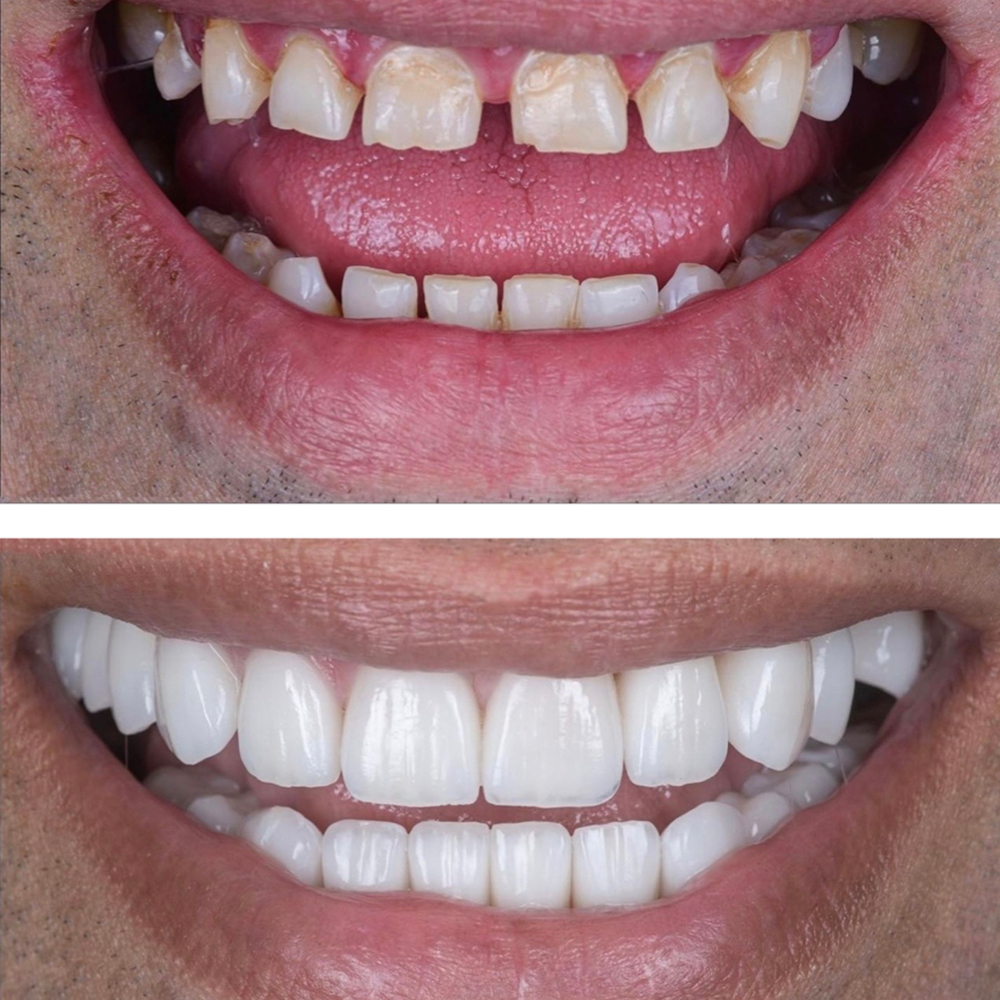
06: Bonding
“It’s the fastest, easiest, most conservative way to straighten the teeth in one visit,” says New York cosmetic dentist Irene Grafman, DDS. “The procedure involves adding material to the existing teeth without removing any healthy tooth structure, and reshaping them to the length, shape and position desired. A dentist who specializes in bonding can straighten a smile by adding various thicknesses of material.”
